Ham and Cheese Soufflé
In my experience, there are few dishes that impress dinner guests more than soufflé. The elegant rise and fall. The way their crunchy tops give in to soft, melted middles. There’s just something magical about this classic French dish.
Only most people, myself included at one point, get nervous at the idea of preparing soufflé, fearful that it will collapse in the oven at the slightest move or change of temperature. It’s true, by their very nature, soufflés fall when they are removed from heat. But with a good recipe and some simple tweaks, you can get those beautiful puffed up mountains of egg and cheese from oven to table with ease. And, you have my word: the closing of the oven door will not make them collapse!
Here, I’ve made a ham and cheese soufflé with nutty gruyère and parmesan cheese, smoked ham, and warming spices like nutmeg and cayenne pepper. I’ve included fresh thyme leaves for a bit of earthiness but you could substitute thyme for any herb you have on hand – finely chopped chives or tarragon would be wonderful. Rather than serve the soufflé in one large dish, I’ve provided instructions for serving in small, individual-sized ramekins. This allows each dinner guest to enjoy in the childlike fun that comes with “popping” the soufflé and also allows the host to serve the dish as either an appetizer course or a main course alongside a simple green salad.
Ingredients
- 4 tablespoons of butter, plus more for greasing ramekins
- ¾ cup of grated parmesan cheese, about 3.5 ounces, divided
- ¼ cup of all-purpose flour
- ¼ teaspoon of cayenne pepper
- 1 teaspoon of kosher salt (or ½ teaspoon of table salt)
- ½ teaspoon of freshly cracked black pepper
- 1 pinch of ground nutmeg
- 1 clove of garlic, minced
- 1-1/2 cups of whole milk
- 5 ounces of gruyere cheese, shredded, about 1-¼ cups
- 6 large eggs, yolks and whites separated
- 2 teaspoons of fresh thyme leaves, plus more sprigs for garnish
- 4 ounces of ham, diced into small ¼-inch pieces
- ¼ teaspoon of cream of tartar
- Special equipment: 6-8 8-ounce mini-cocottes or ramekins
Directions
- Pre-heat oven to 375 degrees F.
- Grease 6-8 small ramekins or mini-cocottes with butter, then sprinkle 1 teaspoon of parmesan cheese in the bottom of each ramekin. Set aside.
- In a small bowl, combine flour, cayenne, salt, black pepper, and nutmeg. Melt 4 tablespoons of butter in a saucepan over medium-low heat. Add garlic and cook until fragrant, about 1-2 minutes. Whisk flour mixture into butter and garlic and cook for 1 minute. Add milk, whisking to combine, and increase heat to medium. Simmer, whisking constantly, until butter and flour mixture has thickened similar to a loose gravy-like liquid, about 2 minutes. Remove from heat, add 6 tablespoons of parmesan cheese and all of the gruyere cheese and continue to whisk until smooth. Once cooled, about 5 to 10 minutes, mix in egg yolks, thyme, and ham and set aside.
- Add egg whites and cream of tartar to the bowl of a stand mixer fitted with the whisk attachment. Whisk on low speed until egg whites turn foamy and take on a very slight yellowish tint, about 2 minutes. Increase speed to medium and continue to whip until stiff peaks form, about 3-4 minutes. Stiff peaks will hold their tip when the whisk is turned upside down. If the peak folds over or forms a hook, this means the whites are not stiff enough and you should continue whisking for another 30-45 seconds before checking again. In the event that you do not have a stand mixer, you can also whisk by hand for about 10 minutes. Remove bowl from stand mixer and fold cheese mixture into the whipped egg whites until combined. Do not stress here that you’ll “break” all of the whipped egg whites while folding. They’re more durable than most people think -- at least for about 10 minutes --and the cream of tartar will help stabilize their structure.
- Spoon the mixture into the prepared ramekins or mini-cocottes, stopping just ¼ to ½-inch before the rim. Sprinkle with remaining parmesan and bake until interior registers 165 degrees F and tops are golden, about 20-25 minutes. Garnish with thyme and serve immediately.
Notes
One of the most important aspects of getting a soufflé just right is in the whipping of the eggs. When you separate the egg whites from the yolks, be very careful not to get any yolk, shell, or debris in the egg white mixture. If you do, carefully scoop it out. The bowl you whip the egg whites should be perfectly dry and very clean. Even a little bit of fat or crumbs can interfere with the egg white whipping. Finally, make sure the eggs have been whipped just until stiff, meaning that when you turn your whisk or whisk attachment upside down, the whipped egg point stands straight up, perhaps with just a very small bend at the end. If it looks like a hook, it needs more whipping. If your egg whites begin to look lumpy, this means they’ve been overbeaten and you should start again.
If your oven comes equipped with a convection oven, do not use this setting while baking the soufflés. Use the traditional “bake” setting.
Don’t be afraid to check on your soufflés while they’re in the oven. Many people are scared they will “collapse” if they open the door. I’ve found this to be mostly urban legend. However, by their very nature, soufflés will fall as they cool, so do have the table set and guests ready to eat so that you’re prepared to serve them immediately.

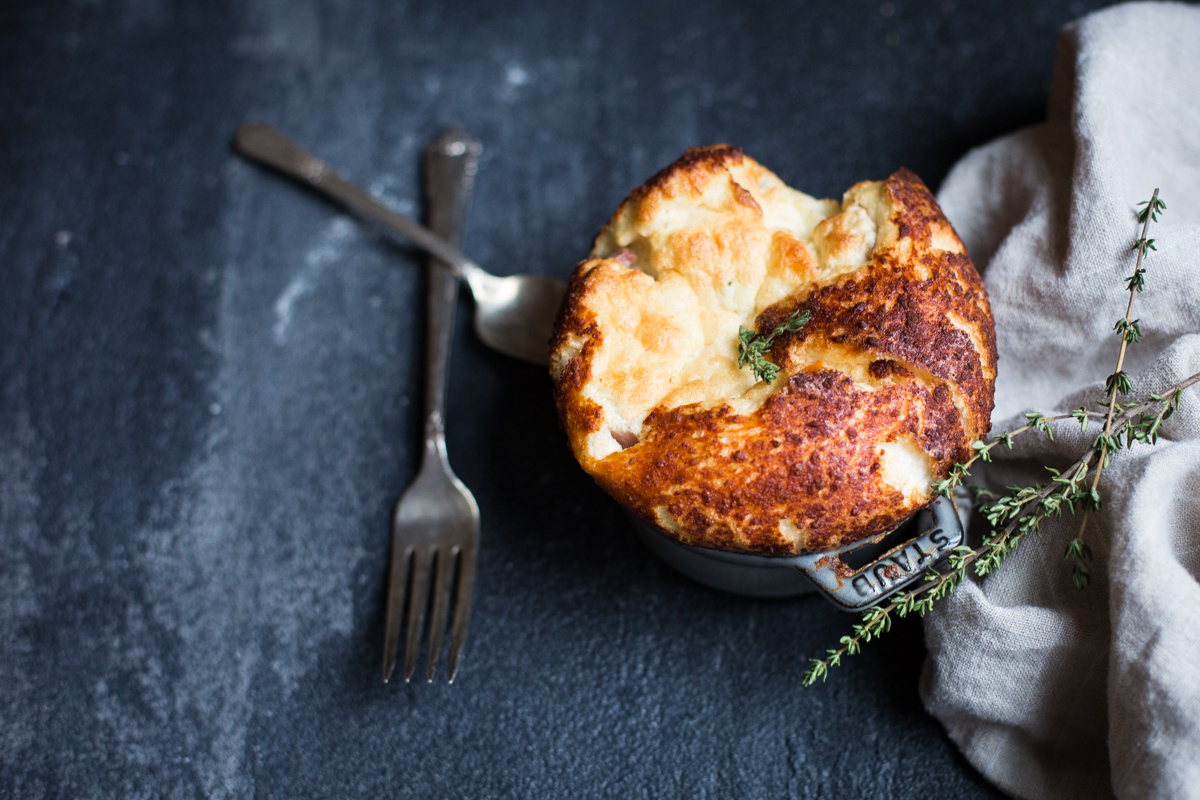
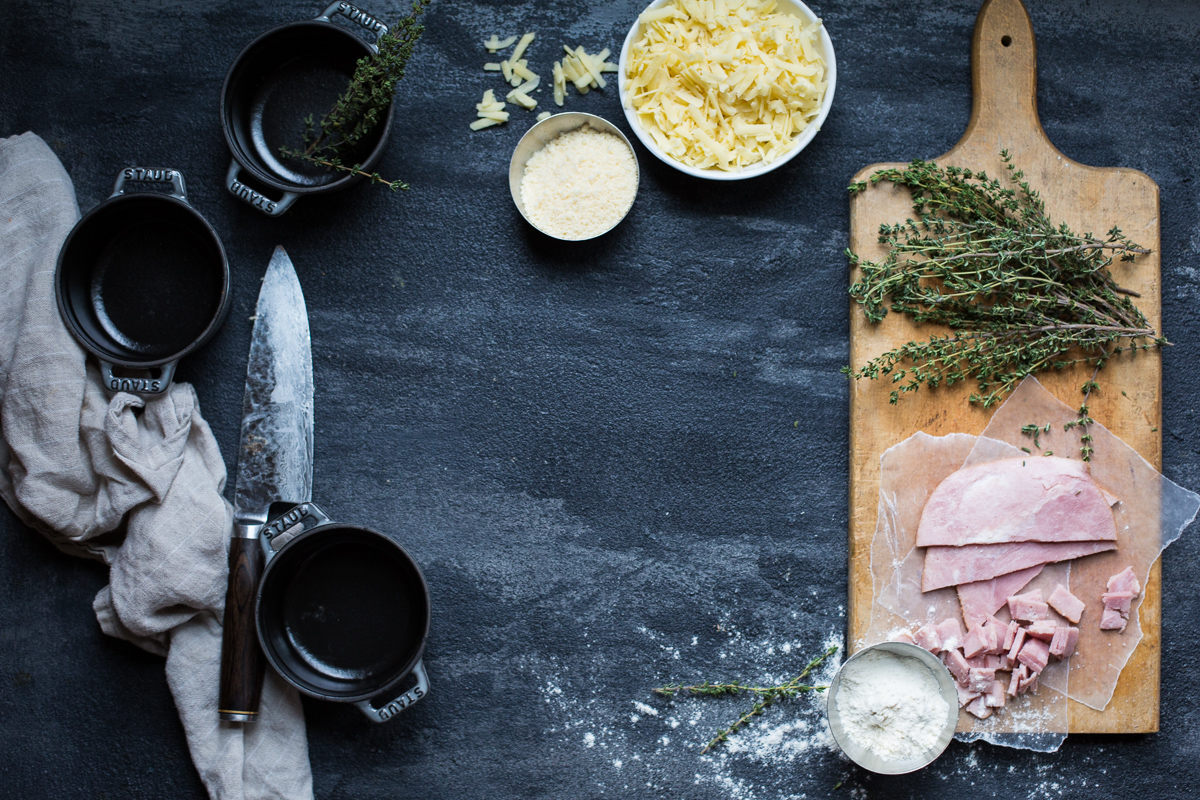
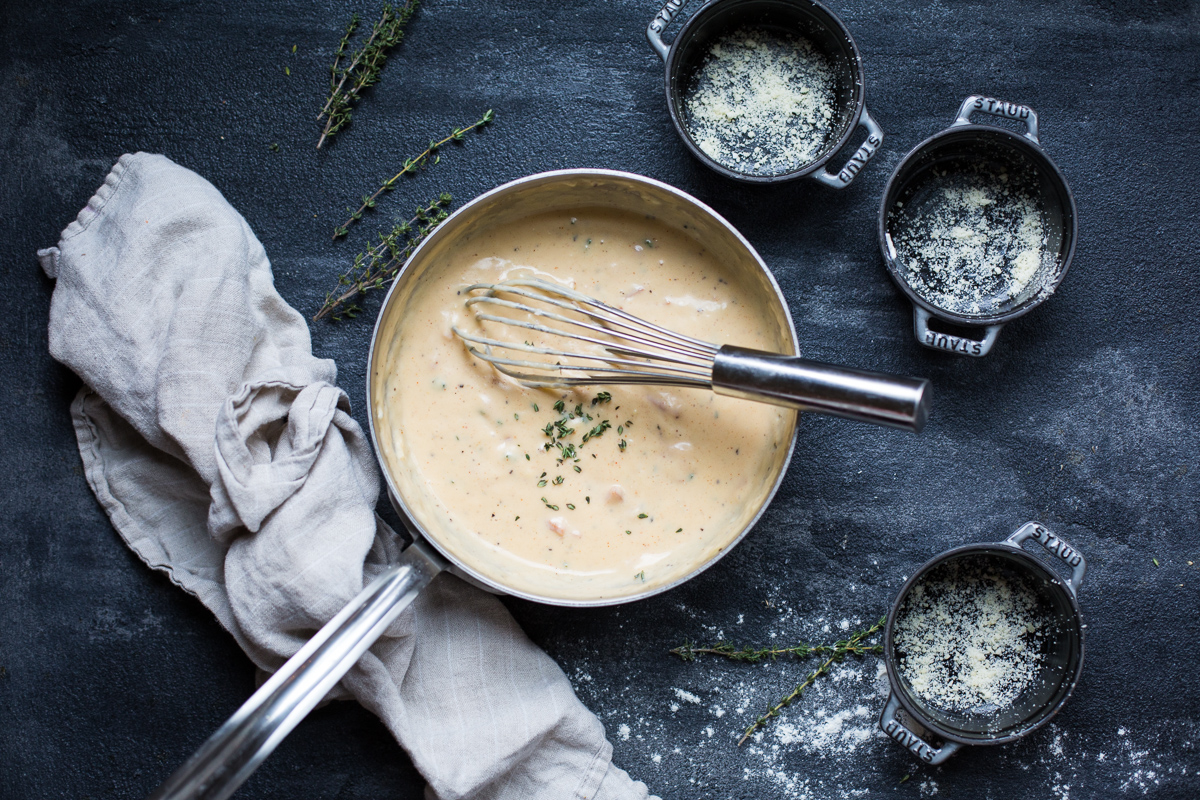
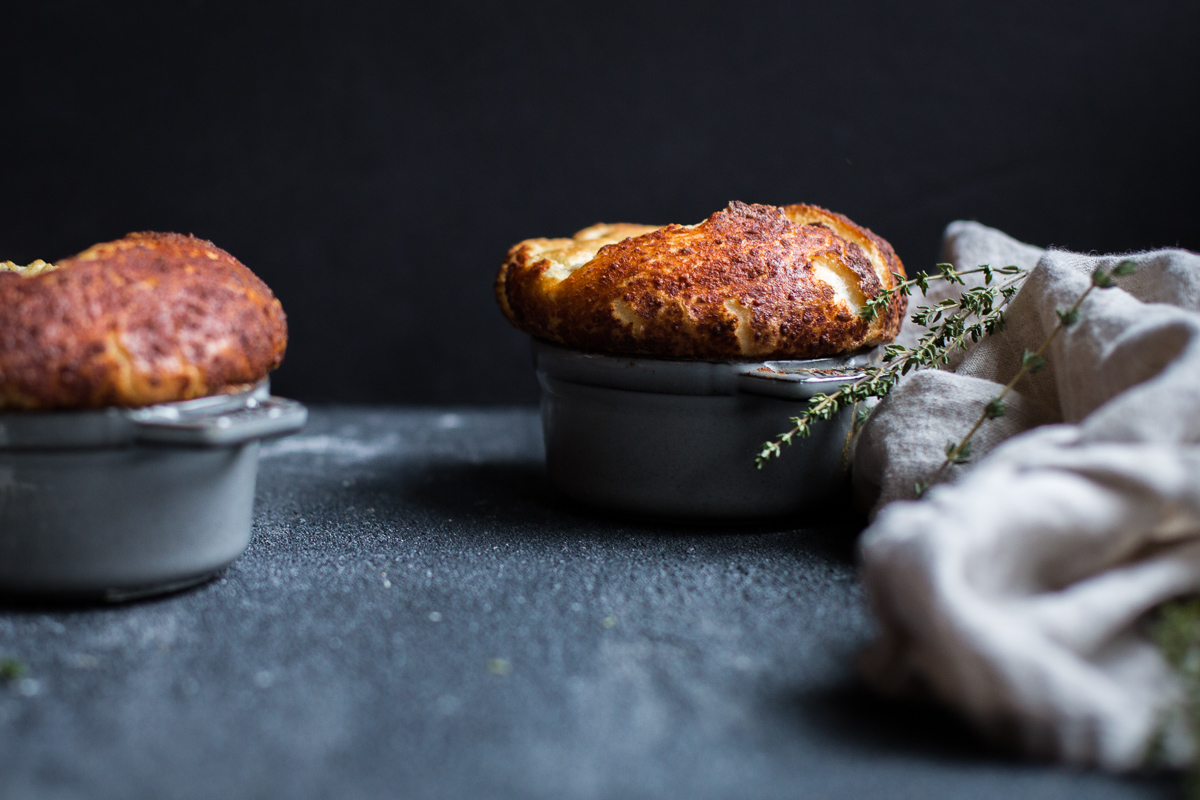
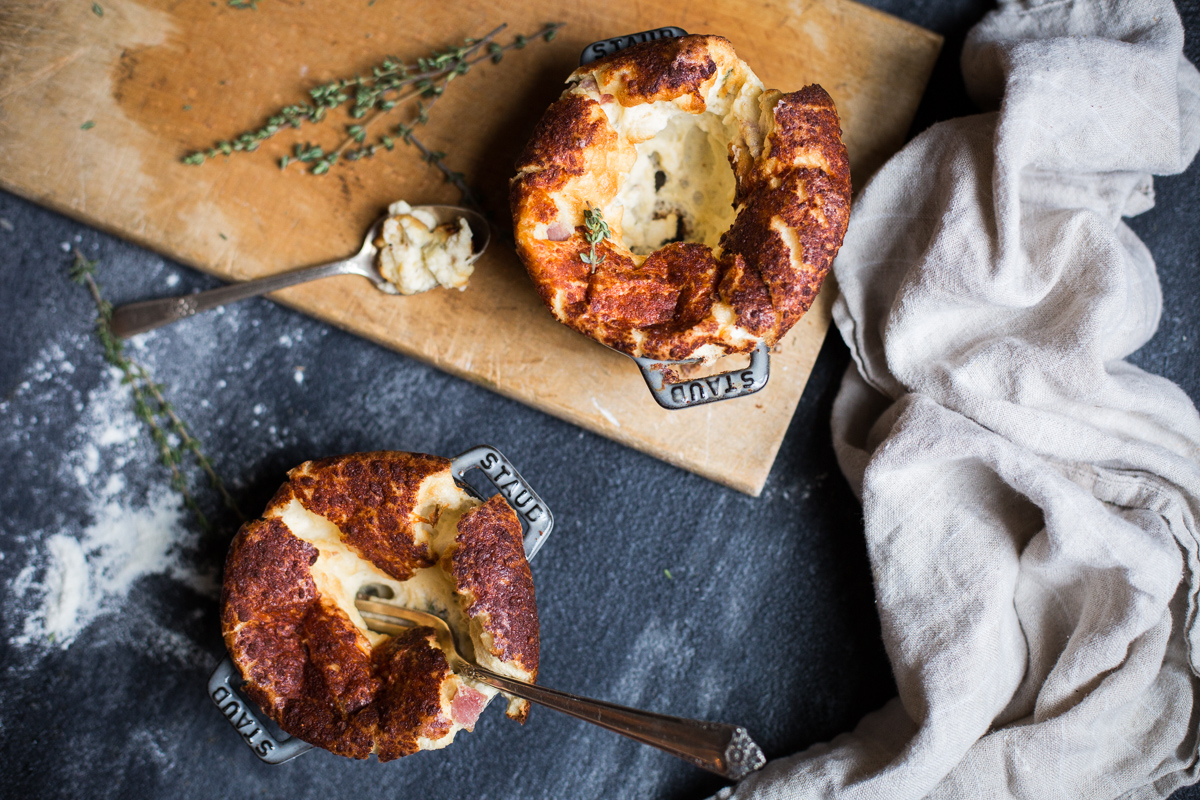
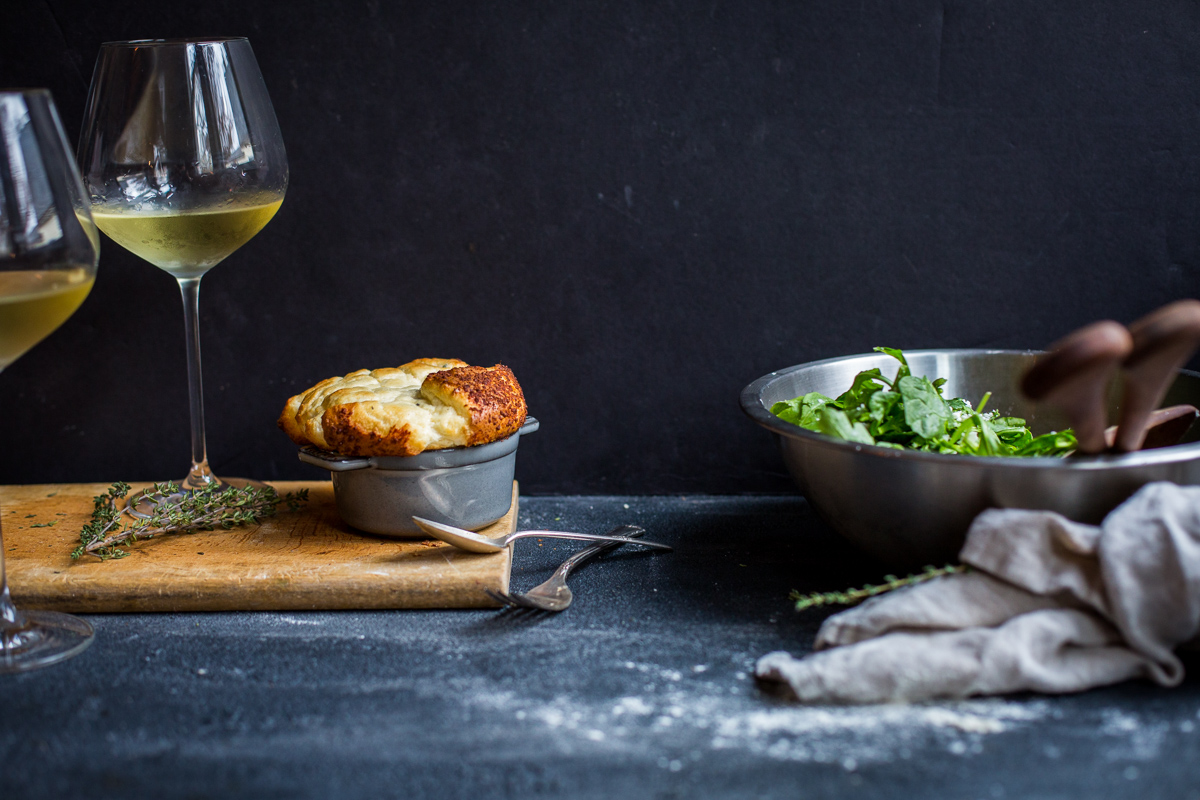


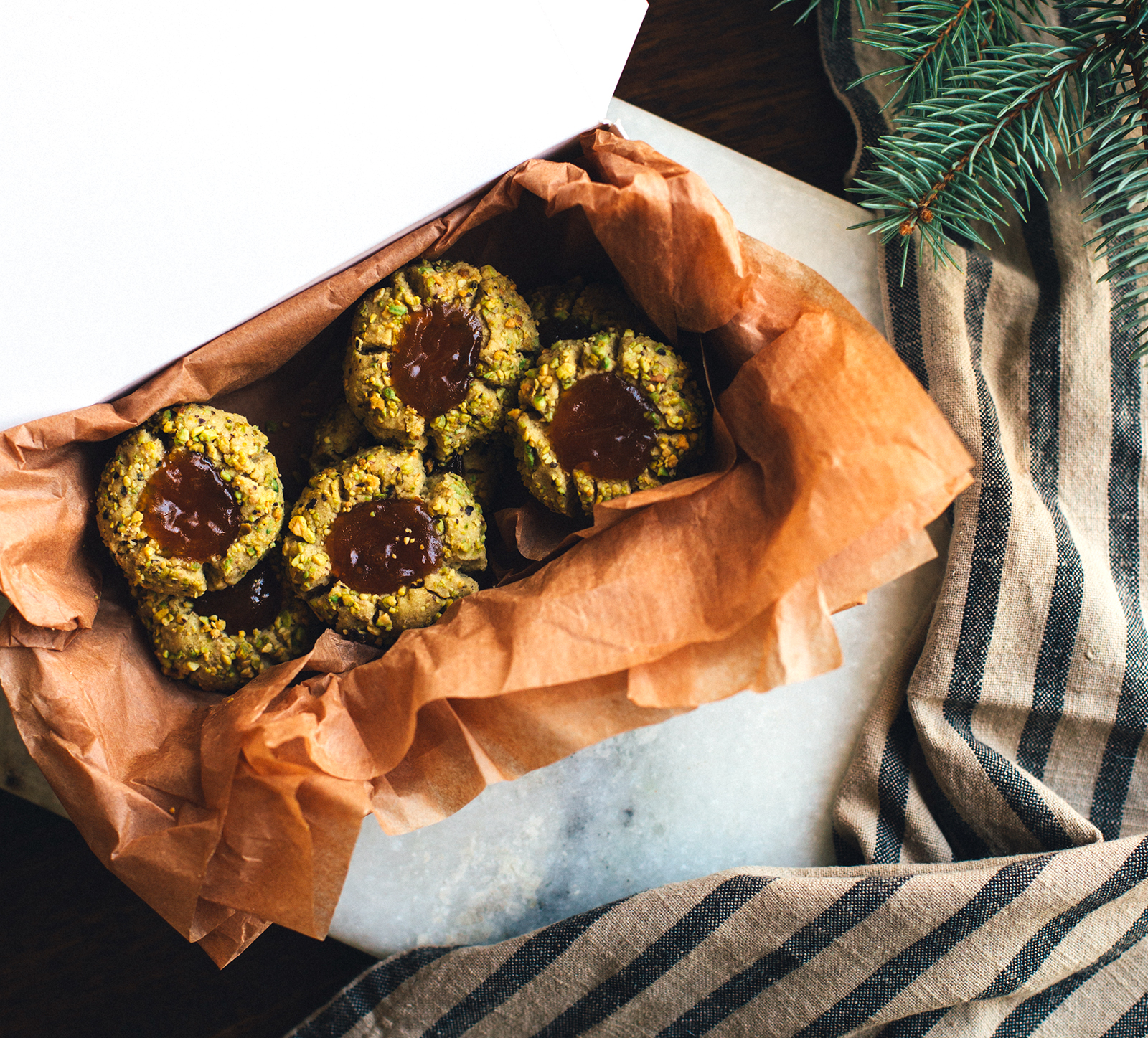

I’m so intimidated by souffle but seeing your gorgeous photographs, I may have to just go for it! They look perfect. Love the styling and the cute little staub ramekins 🙂
Sofia, I’m so thrilled to hear it will inspire you to give soufflés a try at home! And thanks for your sweet words about the styling…Staub ramekins are the absolute best!